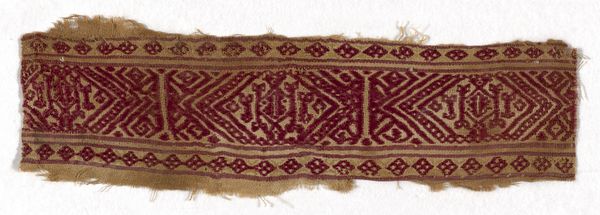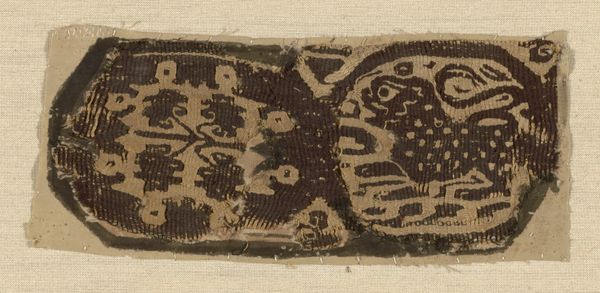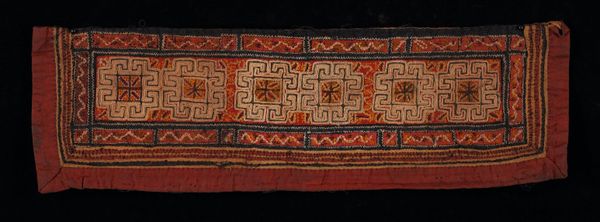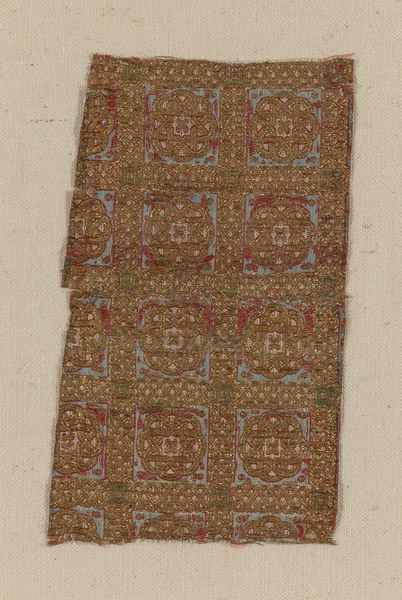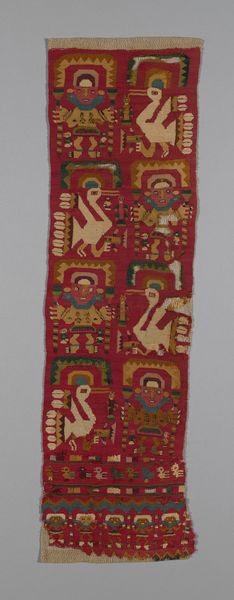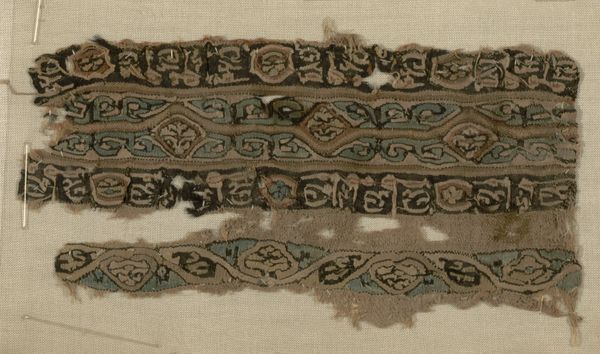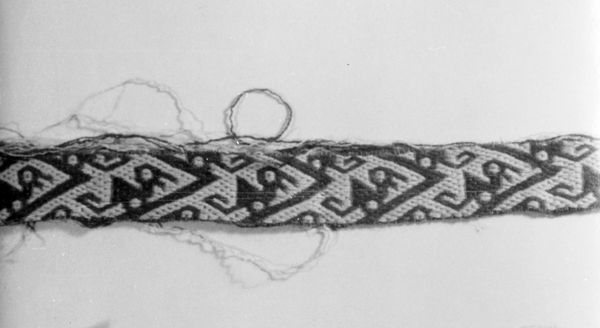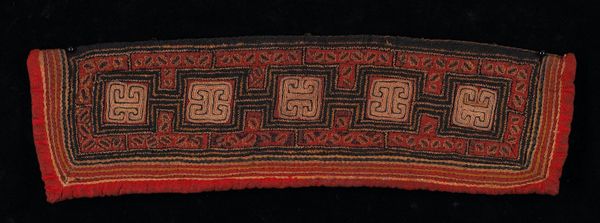
fibre-art, weaving, textile
#
fibre-art
#
weaving
#
textile
#
geometric
#
indigenous-americas
Copyright: Public Domain
Editor: Here we have a textile, “Band,” created by the Nazca people, dating possibly from 700 to 900 AD. It’s currently held at the Art Institute of Chicago. It strikes me as so intricate and carefully crafted. How do you interpret this work? Curator: The “Band,” like many textiles of its time, isn't merely decorative. It's a potent carrier of meaning. Consider the repeated geometric patterns. Do they evoke something to you? Editor: Well, there's a rhythm, a visual pulse. But beyond that, I'm not sure. Curator: The repetition itself speaks to a cultural memory, wouldn't you say? Patterns are rarely arbitrary in these contexts. Each motif, passed down generations, could be symbolic of nature, myth, or even social standing. Editor: So, almost like a written language, woven into fabric? Curator: Precisely! These indigenous American textiles used imagery in ways comparable to writing; they contain vital cultural information. Look at the colors. Can you perceive emotional impact? Editor: Definitely. There are warm reds and yellows juxtaposed with cooler blues and darker tones. Maybe representing duality or balance? Curator: Yes! Color theory wasn’t something “discovered” in the modern era; these craftspeople wielded it consciously. They had acute knowledge about how certain colors impact perception. What emotional response are you left with? Editor: I am struck by the skill of the weaver and the depth of meaning woven into the piece. Curator: Me too, thinking about these textiles from a perspective of cultural memory is always insightful. I wonder how it makes the work more interesting or accessible to you?
Comments
No comments
Be the first to comment and join the conversation on the ultimate creative platform.
